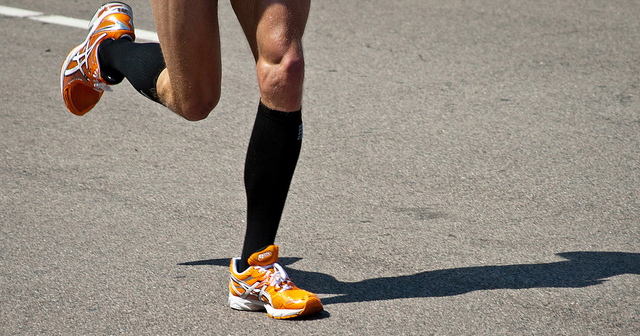
Running biomechanics and footwear’s (from bare feet to orthotics) relationship to injury generates lively debate. And not just among sports clincians. A recent NY times article boldly asked – Does Foot Form Explain Running Injuries? The article profile’s the running professor, Daniel Lieberman’s (Evolutionary Biologist, Harvard) and Mr. Daoud’s (Medical Student, Stanford) research on 4 years worth of data gathered from Harvard’s cross-country running team. The researchers investigated footstrike (heel vs. toe) and rate of injury.
Beyond running style, Lieberman advocates for daily physical activity. In the BMJ podcast, Evolved to Run (that also features Steven Blair and Karim Khan), you’ll hear Lieberman say: “we live in an abnormal world where people sit all day long.” What Lieberman positions as ‘normal,’ from an evolutionary perspective, is human bodies adaptation to having physical activity integrated into daily activities. In short – ‘the abnormality’ results from the dissonance between being ‘built to run’ and the post-industrial epidemic of sedentary behavior. You’ll hear more on the impacts of physical inactivity and the ‘ physical activity dose’ required’ to increase health from Blair and Khan on that podcast.
Lieberman and Daoud concluded that “runners who landed on their heels were considerably more likely to get hurt,” but a forefoot running strike did not neccessarily prevent injury. Also, the researchers caution against changing your running style if you are injury-free.
And BJSM readers will know that ground/foot impact is not the only factor to take into account. What about knee and hip control? Also from Harvard, PT Professor Irene Davis illustrated that gait retraining – providing runners with feedback about landing forces – swiftly reduced anterior knee pain. Read the (free) Editor’s Choice article here.
So, while it may be premature to (run or) jump to conclusions about any one ‘superior’ approach to running, it’s clear that 30-60 minutes of forefoot and/or heel striking is better than no strike at all.
Related BJSM Articles